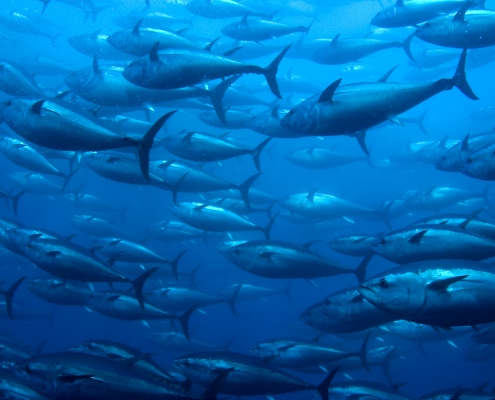
After 11:30 p.m., May 17, 2022, fishermen aboard Atlantic Highly Migratory Species (HMS) Angling or HMS Charter/Headboat permitted vessels may not retain, possess, or land large medium or giant Atlantic bluefin tuna in the Gulf of Mexico (i.e. those measuring 73 inches curved fork length or greater).
The Angling category fishery for trophy bluefin tuna will close effective 11:30 p.m., May 17, 2022, through December 31, 2022.
Based on the best available landings information, the 1.8-mt Angling category Gulf of Mexico incidental “trophy” bluefin tuna (measuring 73 inches or greater) subquota has been reached and exceeded.
This action could affect the following vessels when fishing in the Gulf of Mexico:
Note that the Angling category fishery for school, large school, or small-medium bluefin tuna (27 to 73”) remains open in all areas except for the Gulf of Mexico, which is designated as bluefin tuna spawning grounds and where NOAA Fisheries does not allow targeted fishing for bluefin tuna.
HMS Angling and HMS Charter/Headboat permitted vessel owners are required to report the catch of all bluefin retained or discarded dead within 24 hours of the landing(s) or end of each trip by:
 NOAA Fisheries closed the Atlantic Bluefin Tuna Angling Category for the Southern Area Trophy Fishery on March 1st, 2021. This closure will last all year, ending on December 31st, 2021. The Southern Area Trophy Fishery includes the Atlantic area south of 39°18’N lat. (off Great Egg Inlet, NJ). It does not include the Gulf of Mexico. The Angling Category includes fishermen aboard vessels with an Atlantic HMS Angling category or Atlantic HMS Charter/Headboat permit (fishing recreationally).
NOAA Fisheries closed the Atlantic Bluefin Tuna Angling Category for the Southern Area Trophy Fishery on March 1st, 2021. This closure will last all year, ending on December 31st, 2021. The Southern Area Trophy Fishery includes the Atlantic area south of 39°18’N lat. (off Great Egg Inlet, NJ). It does not include the Gulf of Mexico. The Angling Category includes fishermen aboard vessels with an Atlantic HMS Angling category or Atlantic HMS Charter/Headboat permit (fishing recreationally).
The 1.8-mt Southern Area “trophy” bluefin tuna (73″ or greater) subquota has been reached and exceeded, causing the closure. Now, fishermen within the Angling Category may not retain, possess, or land “trophy” bluefin tuna in the Southern Area. Catch (or tag) and release for bluefin is still permitted, as is landing bluefin between 27″ and 73″. Note that the Southern Area is distinct from the Gulf of Mexico, where all bluefin targeting is illegal due to the importance of the region for spawning.
In 2019, this closure occurred on March 14th, while in 2020 it occurred February 20th.
To stay up to date on all things billfish and highly migratory species, become a member, subscribe to our monthly newsletter, and follow us on social media, @TheBillfishFoundation.
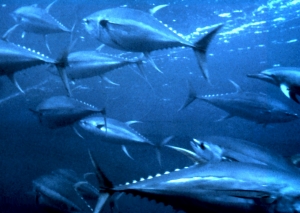
NOAA Fisheries announced landings updates for Atlantic swordfish, billfish, and tunas, which includes recreational billfish and bluefin tuna landings from January 1st through June 30, 2020. But swordfish and non-bluefin tuna landings are for the period of January 1 through July 31, 2020.
In general, reported landings are down compared to the same time in 2019, except for Northern Albacore, whose landings are skyrocketing compared to 2019. Swordfish landings are almost exactly the same as last year, with an uptick in commercial bycatch offset by decreases in commercial and recreational targeted landings. Billfish are currently on par to stay well under the 250-fish quota, with an increase in Atlantic blue marlin landings.
The 250-fish U.S. recreational Atlantic billfish landing limit includes landings of Atlantic blue marlin, white marlin, and round-scale spearfish. As of June 30th, 2020, only 38 landed Atlantic marlin were reported within the quota and 21 Western Atlantic sailfish were landed. With several large tournaments taking place in August, the yearly landing figure is likely to increase.
| Species | 2020 Landings to 6/30 | 2019 Total Landings |
| Atlantic Blue Marlin | 34 | 79 |
| Atlantic White Marlin | 4 | 75 |
| Roundscale Spearfish | 0 | 35 |
| Total | 38 | 189 |
| Remaining (of 250) | 212 | 61 |
U.S. commercial bycatch (incidental landing) of swordfish has significantly increased in 2020, compared to the same time in 2019. However, intentional (directed) commercial landings of swordfish are way down. Recreational swordfish landings are on par with last year’s. The U.S. recreational and commercials fisheries’ allocation is combined.
| 2020 Landings (mt dw) | % of Quota Landed | 2019 Landings* (mt dw) | |
| Commercial Landing | 499.8 | 18.9% (quota 2,637.6 mt dw) | 507 |
| Commercial Bycatch | 13.2 | 11%
(quota 300 mt dw) |
4.4 |
| Recreational Landing | 19.8 | 20.1 | |
| Total | 532.8 | – | 531.5 |
*Only includes landings during the same time period, January 1st through July 31st, 2019
Bluefin tuna landings are slightly down in 2020. The General Category, which includes handline and rod and reel, is down by just 5 mt. Longline landings are down by 17.9 mt.
| 2020 Landings (mt) | Quota | 2019 Landings* (mt) | |
| General | 133.6 | 606.7 | 136.5 |
| Harpoon | 25.1 | 46.0 | 16.9 |
| Longline | 35.8 | 188.6 | 53.7 |
| Trap | – | 1.2 | – |
| Purse Seine | – | 55 | – |
| Reserve | – | 143 | – |
| Total | 194.7 | 1,040.5 | 207.2 |
*Only includes landings during the same time period, January 1st through June 30th, 2019
Northern Albacore landings have almost doubled in 2020 compared to 2019, with all other tuna landings being lower than numbers that in 2019.
| 2020 Landings (mt ww) | 2019 Landings* (mt ww) | |
| Bigeye | 103.8 | 117.6 |
| Northern Albacore | 131.4 | 79.4 |
| Yellowfin | 340.2 | 387.1 |
| Skipjack | 1.8 | 6.0 |
*Only includes landings during the same time period, January 1st through July 31st, 2019
To stay up to date on all things billfish and highly migratory species, become a member, subscribe to our monthly newsletter, visit our online shop, and follow us on social media, @TheBillfishFoundation.
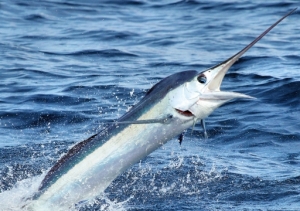
NOAA Fisheries announced landings updates for Atlantic swordfish, billfish, and tunas, including bluefin, yellowfin, bigeye, skipjack, and albacore. This update include all landings between January 1st and March 31st of 2020.
The 250-fish recreational Atlantic billfish quota includes landings of blue marlin, white marlin, and roundscale spearfish. As of March 31, 2020, no Atlantic billfish had been landed that are counted in the quota. However, five Atlantic sailfish have been landed, but these fish will not be counted in the 250-fish quota.
Swordfish landing is up in in 2020 as compared to 2019. Between January 1st and March 31st, 2020, over 270 mt of swordfish have been landed by commercial fisheries, totaling over 80 mt more than this time last year. Commercial bycatch is also three times higher than it was last year. Conversely, recreational landing of swordfish, which shares its quota with commercial bycatch, is on par with last year.
| 2020 Landings (mt dw) | % of Quota Landed | 2019 Landings* (mt dw) | |
| Commercial Landing | 270.4 | 20.5%
(1,318.8 mt dw 2x/year) |
190.9 |
| Commercial Bycatch | 6.6 | 4.5%
(300 mt dw) |
2.0 |
| Recreational Landing | 7.0 | 7.2 | |
| Total | 284.0 | 9.7% (2,937.6 mt dw) | 200.1 |
*Only includes landings during the same time period, January 1st through March 31st, 2019
Bluefin tuna landings are also up in 2020. The General Category, which includes handline and rod and reel, is up by just over 15 mt as compared to this time last year. Longline landings are up by only 5 mt, with all other categories reporting no landings, on par with 2019.
| 2020 Landings (mt) | Quota | 2019 Landings* (mt) | |
| General | 124.1 | 606.7 | 108.9 |
| Harpoon | 0 | 46.0 | 0 |
| Longline | 27.6 | 188.6 | 22.3 |
| Trap | 0 | 1.2 | 0 |
| Purse Seine | 0 | 55.0 | 0 |
| Reserve | 0 | 143.0 | 0 |
| Total | 151.6 | 1,040.5 | 131.2 |
*Only includes landings during the same time period, January 1st through March 31st, 2019
Bigeye and Northern Albacore are experiencing fairly high upticks in landing in 2020 as compared to 2019. In contrast, both yellowfin and bigeye have lower landings so far in 2020 than this time last year.
| 2020 Landings (mt ww) | 2019 Landings* (mt ww) | |
| Bigeye | 41.3 | 33.1 |
| Northern Albacore | 98.3 | 37.0 |
| Yellowfin | 100.3 | 132.0 |
| Skipjack | 0.6 | 2.3 |
*Only includes landings during the same time period, January 1st through March 31st, 2019
To stay up to date on all things billfish and highly migratory species, become a member, subscribe to our monthly newsletter, visit our online shop, and follow us on social media, @TheBillfishFoundation.
NOAA just released the 1st quarter landing update for the recreational fishing community. While only 1 blue marlin has been landed in the 1st quarter, we expect the number of fish to be reported will increase by the 2nd quarter due to tournament season.
Landings are compiled using self-reported angler reports from the Atlantic Highly Migratory Species Non-Tournament Recreational Swordfish and Billfish Landings Database; tournament landings from the Atlantic Tournament Registration & Reporting system; catch card reports from North Carolina and Maryland; and individual billfish intercepted by the Large Pelagic Survey and Marine Recreational Information Program.
Please note that estimates are subject to change due to receipt of updated information (e.g., data from late reporting). As specified in 50 CFR Part 635.27(d) (1), the recreational billfish fishery is limited to a maximum of 250 Atlantic blue and white marlin and roundscale spearfish landings, combined, per year.
Preliminary landings for January 1–March 31, 2019 in numbers of fish for Atlantic blue and white marlin, roundscale spearfish, and western Atlantic sailfish.
| Species | 2019 (Q1) | 2018 |
|---|---|---|
| Atlantic blue marlin | 1 | 90 |
| Atlantic white marlin | 0 | 78 |
| Roundscale spearfish | 0 | 20 |
| Total | 1 | 188 |
| Remaining landings limit (of 250) | 249 | 62 |
| Western Atlantic sailfish* | 5 |
*Western Atlantic sailfish are not included in the 250 fish landings limit for Atlantic blue and white marlin/roundscale spearfish.
Last updated by Office of Sustainable Fisheries on 05/20/2019
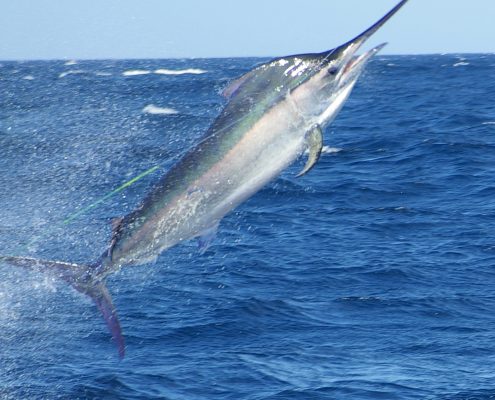
The table below provides the total number of billfish (January 1, 2018, through, December 31, 2018) landings in numbers of fish for Atlantic blue and white marlin,
Landings are compiled using self-reported angler reports from the Atlantic Highly Migratory Species (HMS) Non-Tournament Recreational Swordfish and Billfish Landings Database; tournament landings from the Atlantic Tournament Registration & Reporting (ATR) system; catch card reports from North Carolina and Maryland; and individual billfish intercepted by the Large Pelagic Survey (LPS) and Marine Recreational Information Program (MRIP). Please note that estimates are subject to change due to late reporting. As specified in 50 CFR Part 635.27(d) (1), the recreational billfish fishery is limited to a maximum of 250 Atlantic blue and white marlin and roundscale spearfish landings, combined, per year.
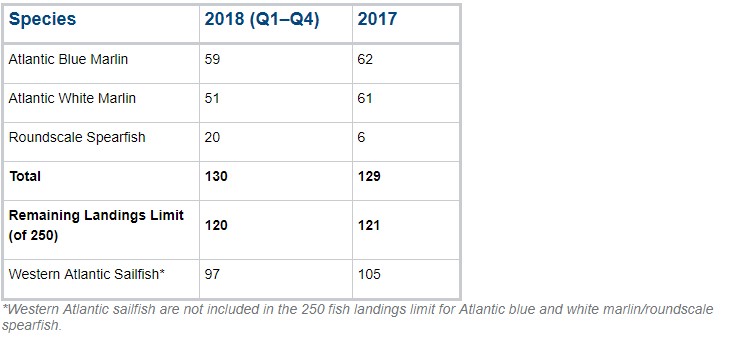
To learn more visit the HMS billfish landings information webpage.
The National Oceanic and Atmospheric Administration just released their preliminary 2018 (January 1, 2018 through June 30, 2018) landings in numbers of fish for Atlantic blue and white marlin, roundscale spearfish, and western Atlantic sailfish. While many tournaments had not happened yet, we still believe that the recreational community will be well below our annual quota for billfish landed.
Landings are compiled using self-reported angler reports from the Atlantic Highly Migratory Species Non-Tournament Recreational Swordfish and Billfish Landings Database; tournament landings from the Atlantic Tournament Registration & Reporting system; catch card reports from North Carolina and Maryland; and individual billfish intercepted by the Large Pelagic Survey and Marine Recreational Information Program. As specified in 50 CFR Part 635.27(d) (1), the recreational billfish fishery is limited to a maximum of 250 Atlantic blue and white marlin and roundscale spearfish landings, combined, per year.
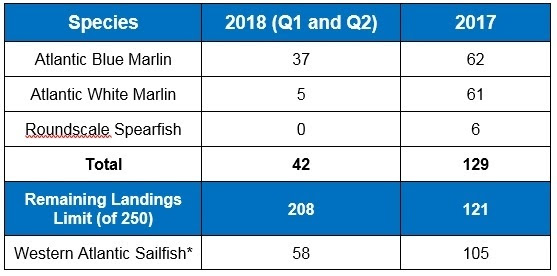
To learn more visit the HMS billfish landings information webpage.
Get up to date information on events, news, and research on a constant basis. Submit your email now to join our exclusive newsletter.
Dear Congressional Members,
I, along with The Billfish Foundation, thousands of anglers, captains, mates, boat owners, big game fishing clubs, fishing tournament directors, recreational fishing/boating/equipment manufacturing, sales, and service businesses, ask you to stop the National Marine Fisheries Service’s (NMFS) from opening Closed Zones in the Gulf of Mexico and off the east coast of Florida and Charleston to commercial pelagic longline fishing for swordfish.
A win/win – A better option and one consistent with the goals of the January Executive Order, known by most as 30/30, is to credit Closed Zone waters to mitigating negative impacts to oceans and all marine resources from climate change. Continuing the current management strategy within the Closed Zones would make good ecological sense, for recreational fishing makes a very light imprint on the resources, and good economic sense to the region. Unfortunately, pelagic longline fishing is not sustainable, while buoy, green stick and rod and reel gears are sustainable.
The Zones were closed 20 years ago to protect overfished marlin, sailfish, juvenile swordfish, some sharks and tunas, plus marine mammals and sea turtles, whose populations are overfished due to pelagic longline fishing. Only swordfish have recovered leaving the other overfished species in need of continued Closed Zone protections. Commercial buoy gear is a sustainable fishing gear that should replace pelagic longline gear.
Retaining Closed Zones as currently managed and crediting the waters to mitigate Climate Change, as is the goal of the EX, will:
(1) provide a win/win opportunity to protect marine resources and help mitigate Climate Change;
(2) protect overfished marlin, sailfish, swordfish, tunas, sharks, sea turtles, marine mammals, sea birds and many more species and their marine habitat; and
(3) support thousands of jobs in the recreational fishing, boating, marine industries and tourism support industry. (Saltwater recreational fishing in the southeast and west south central (Gulf) contributes over $12 million in federal taxes, $8.5 million in state taxes, supports hundreds of thousands of jobs with $5 million in wages.)
I respectfully call upon you and the Secretary of Commerce’s Office to stop the NMFS from opening the established Closed Zones and instead credit them, as currently managed, to meet goals of the EO.
Sincerely,
[Your Name]